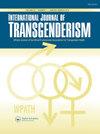Breaking down barriers and binaries in trans healthcare: the validation of non-binary people.
Q1 Social Sciences
International Journal of Transgenderism
Pub Date : 2019-03-01
eCollection Date: 2019-01-01
DOI:10.1080/15532739.2018.1534075
引用次数: 28
Abstract
The field of gender affirming medical interventions now rests on over one hundred years of modern medical history, with the ‘masculinisation surgery’ (and subsequent legal recognition as male by the state of Prussia) of Herman Karl recorded in 1882 (Lester, 2017). This history owes much to practitioners willing to challenge social and medical expectations regarding sex/gender, yet this was in parallel with an uglier legacy of inflexible gatekeeping practices. This is typified in Garfinkel’s case study of Agnes, a trans woman who in the late 1950s successfully constructed a fictitious intersex narrative in order to access gender affirming surgery otherwise unavailable to her (Garfinkel, 2006). This was only possible because Agnes had secretly taken estrogen, prescribed to her mother, from the age of 12. Agnes’ status as a woman was subject to exceptional scrutiny and was only found valid because she fulfilled clinical expectations of what it meant ‘to be’ a ‘real’ woman to her doctors at the time. Not only was it vital that she had never engaged sexually with her penis, nor experienced attraction to women, but her measurements of 38-25-38, ‘appropriate’ style of dress, and active distain of homosexuality were topics of commentary in her medical records which helped her gain validation. In short, the cultural history of medical practice has a legacy of enforcement of the gender binary. While lessening in terms of the strict enforcement of gender roles and sexist stereotyping, a clinician may still potentially deem ‘excess’ masculinity in a trans woman (or femininity in a trans man) to be a subject of ‘concern’, in a way that gender expression in cis women and men does not disenfranchize their gender identities. For the sake of this editorial, I define non-binary people as those who do not identify (exclusively) as male or female. I also use this as an umbrella term which is inclusive of people who identify themselves as genderqueer, agender/neutrois, and culturally specific conceptualizations of gender that exist outside of the Westernized gender binary (Vincent & Manzano, 2017). Language and identity categories are in a constant state of evolution, with many other terms used to capture particular experiences of (non-binary) gender. For example, genderfluidity indicates a sense of gender which varies over time. A bigender identity involves the experience of two gender identities – either simultaneously or varying (and so therefore may be fluid, or not). Before addressing the ramifications of the history of trans medicine, and developments in gender affirming medicine that are associated with non-binary people, it is necessary to unpack the ontology of non-binary and the implications of the above definition in regards to community identity politics. This allows a rigorous foundation for nuanced, sensitive, and flexible medical practice. Firstly, a discussion of the conceptual complexities and different uses of ‘sex’ versus ‘gender’ is beyond the scope of this piece. However, a strict delineation between sex as ‘biological factors’ (typically chromosomes, hormone profile, genitals, gonads, and secondary sexual characteristics) and gender as psychosocial fails to recognize the evidence for at least a partial biological basis for gender identity (Kruijver et al., 2000). Such a demarcation also obscures how the meaning打破跨性别医疗保健中的障碍和二元性:非二元性人群的验证。
本文章由计算机程序翻译,如有差异,请以英文原文为准。
求助全文
约1分钟内获得全文
求助全文
来源期刊

International Journal of Transgenderism
Social Sciences-Gender Studies
CiteScore
5.10
自引率
0.00%
发文量
0
期刊介绍:
International Journal of Transgenderism, together with its partner organization the World Professional Association for Transgender Health (WPATH), offers an international, multidisciplinary scholarly forum for publication in the field of transgender health in its broadest sense for academics, practitioners, policy makers, and the general population.
The journal welcomes contributions from a range of disciplines, such as:
Endocrinology
Surgery
Obstetrics and Gynaecology
Psychiatry
Psychology
Speech and language therapy
Sexual medicine
Sexology
Family therapy
Public health
Sociology
Counselling
Law
Medical ethics.
 求助内容:
求助内容: 应助结果提醒方式:
应助结果提醒方式:


